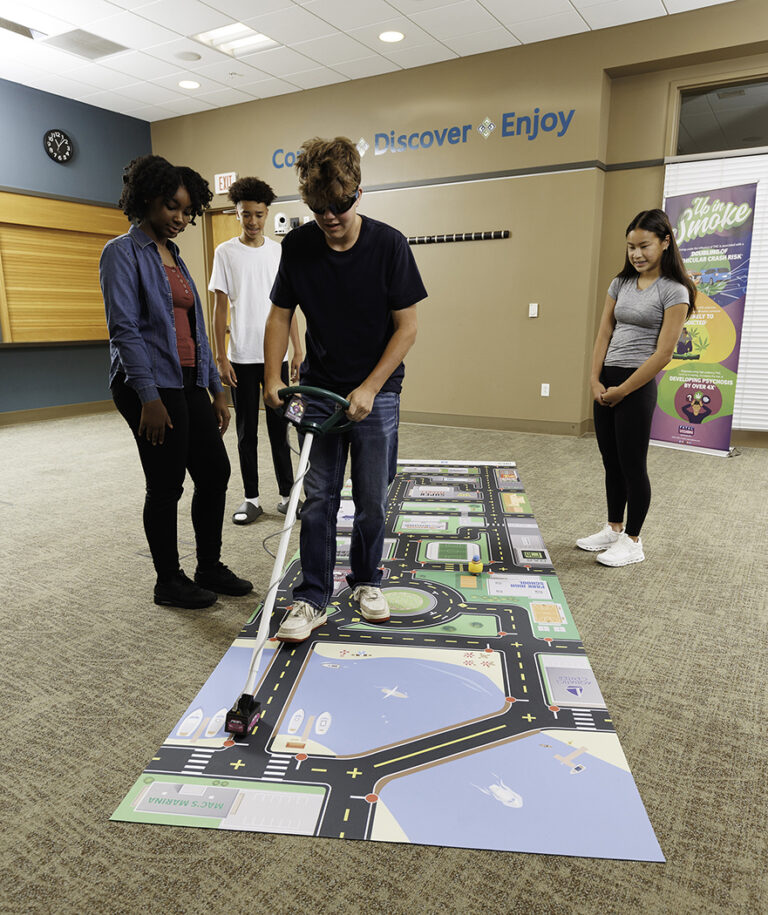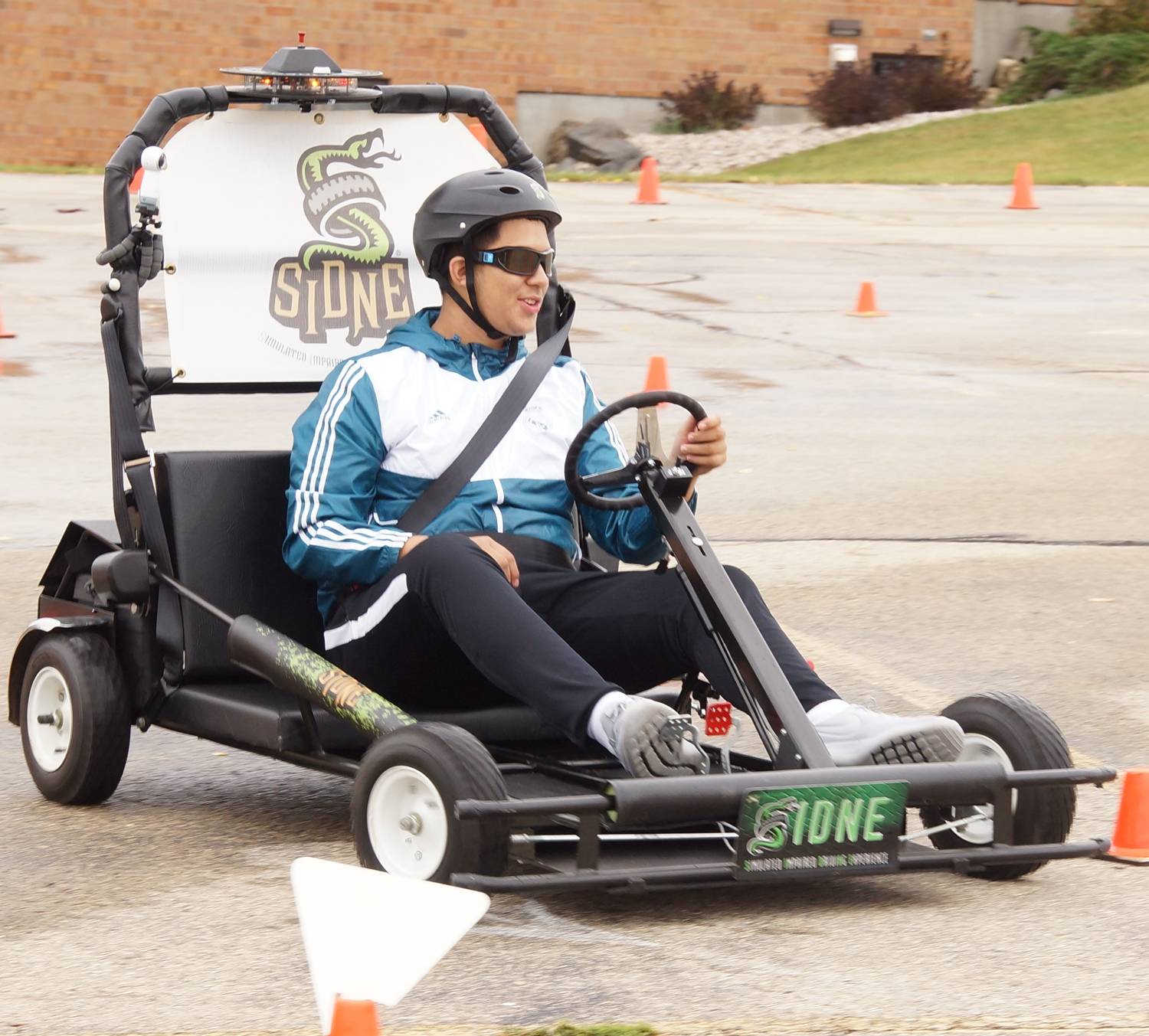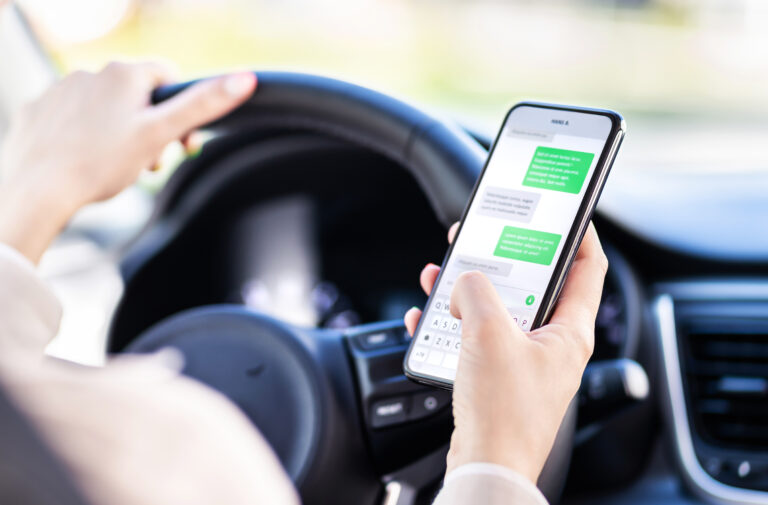
Identifying High-Risk Groups for Drowsy Driving
Drowsy driving is a significant danger on the road, so teaching drivers about the risks with hands-on learning is an important way to reduce crashes. Staying alert while driving is
Be First to Know About Fatal Speeding™ — Launching Early 2026! LEARN MORE

Students and young drivers can benefit from a distracted driving education program that incorporates hands-on learning about distracted driving. We’ve gathered some top resources in this blog to help outline beneficial topics to cover in a driving education program.
When introducing the dangers of distracted driving, be sure to touch on the causes of distracted driving and common misconceptions. Offer statistics and data on distracted driving crashes, especially those involving teens and new drivers. Tools like Fatal Vision Drowsy and Distracted Goggle Kits, the SIDNE driving simulator, or the Roadster Pedal Kart driving simulator, help show students why distracted driving is so dangerous. Combined with discussions about what they learned from the goggles and activities, these hands-on learning tools give students a better understanding.
When talking about the types of distractions with students, be sure to incorporate hands-on learning opportunities, like the Fatal Vision Distracted Driving Goggles and Activities. The goggles simulate the time eyes are taken off the road during various types of distractions. Visual, manual, cognitive, and external distractions are topics to discuss. Talk about how students can recognize and avoid distractions while driving to ensure they’re safe on the road.
Talking about the consequences and laws for driving while distracted can be a great deterrent to this risky behavior. Be sure to incorporate your state’s laws on texting while driving, and other state-imposed laws around distracted driving. Talk about the role of law enforcement in distracted driving, and why there are regulations around cell phone use while driving.
Cell phones and other technology are ever-present in cars and can be distracting while on the road. Discuss with new drivers about the rise in smartphone usage while driving and the risks associated with using phones or texting while driving. Use statistics and first-hand accounts to help drive this message home. Talk about voice-activated technology, hands-free devices, and even screens or displays in the vehicle. Use hands-on learning to help students understand how distracted driving is risky behavior.
Creating educational and awareness initiatives in your school or community is key to reducing distracted driving crashes. Consider partnering with a local government or law enforcement agency to promote awareness or start a public service announcement and social media campaign for broader reach in your community. Create an outreach plan if your school doesn’t have one already. Get parents or guardians involved in distracted driving campaigns, and be sure to reinforce the message regularly with students and new drivers.
When working with teens and student drivers, it’s important to talk about age and peer pressure. Start discussions around distracted driving among teens and the pressure they may face. Talk about ways they can address and prevent distractions in the vehicle and extend these safe driving habits to older drivers as well.
Giving students and teen drivers safe alternatives is key for a distracted driving prevention program. Talk about how they can set clear rules and boundaries for themselves and others in the car with them and give them tips on staying alert and focused while behind the wheel. Talk about alternatives to texting and calling while driving, and how important it is to be a safe driver and passenger in the car.
Commercial drivers have many distractions, like stop requests, route information, updating schedules, notifications relating to deliveries, and more. Training and education for drivers is equally important, and they can benefit from hands-on learning and training opportunities as well. Talk about safer options, best practices, and even the legal consequences commercial drivers may face.
These distracted driving educational resources can help create a solid foundation for your community to help them understand safer driving practices. Teens and new drivers face a variety of distractions. Providing and education program with tools like Drowsy & Distracted Driving Goggles or driving simulators like the SIDNE or Roadster Pedal Kart, and knowledge on choosing safer options, can help reduce crashes and keep everyone on the road safer. To get started with Fatal Vision Distracted Driving tools for your education program, get a quote from our expert team today.
Innocorp is the pioneering developer of Fatal Vision® Goggles and other experiential learning tools designed to educate on the dangers of impairment and promote risk prevention. Innocorp provides impactful, hands-on resources used globally by law enforcement, educators, and safety professionals to demonstrate the consequences of substance use, risky driving, and other dangerous behaviors.
We’d love to online chat! We are available Monday-Friday from 8am-5pm (CST):
Or schedule a time for a consultation:

Drowsy driving is a significant danger on the road, so teaching drivers about the risks with hands-on learning is an important way to reduce crashes. Staying alert while driving is

Here are a few types of distractions while driving, along with hands-on learning opportunities to help drivers understand these distractions. Driving while distracted is dangerous for anyone behind the

Teaching new drivers the dangers of distracted driving can help them understand why focusing on the road is so important. Teaching young or new drivers about the dangers of distracted